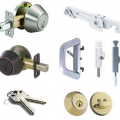What is Access Control?
Access control, as the name suggests, is a technology used by homes and/or businesses worldwide to control access to their residential or commercial premises. Access control systems are also used for informational security by restricting access to data systems.
How Does Access Control Work?
Access control systems are electronic systems that you can use to manage and restrict the inflow of people entering your building or premises. These systems can be accessed by authorised personnel with proximity readers, key fobs, cards or readers, PIN codes, remotes, request to exit switches, and more. These systems are accompanied with a management software and control equipment.
Access control systems can be installed at a building level, departmental level or room level depending on the size of your business, and the level of restriction that you are wanting to implement. For example, if you run a factory that has high-risk zones, you could restrict authorisation to only personnel trained to be in those high-risk zones. This helps with safety and minimises risk/accidents.
The components of an access control system usually include:
- A panel or control system which is either provided by the installer or a web-based control panel that you can manage on your computer, tablet or smartphone.
- An entry point that is access controlled – door, turnstile, elevator, or such.
- An access reader at the entry point, which unlocks upon verification of authorised entry.
- Request to exit buttons or motion detectors that are used to manage exit points.
Access control installers can customise a system as per your requirements, to ensure it meets all your expectations.
Types of Access Control Systems
The common types of access control are:
- Mandatory Access Control (MAC)
- Role Based Access Control (RBAC)
- Discretionary Access Control (DAC)
- Rule Based Access Control (RBAC)
Mandatory Access Control (MAC)
Mandatory access control systems are used to classify individuals to permit them access into a unit or facility. The owner or manager has complete control over the system, and end users get a label that gives them access with established security guidelines.
Role Based Access Control (RBAC)
Role based access control can be used to assign control depending on the position that a person holds at the organisation.
Discretionary Access Control (DAC)
Discretionary access control is the most commonly used and least restrictive type of system. The business owner can decide which people are allowed in a specific location, physically or digitally.
Rule Based Access Control (RBAC)
Criteria can be defined by the manager of the control system to dynamically assign roles to individuals.











